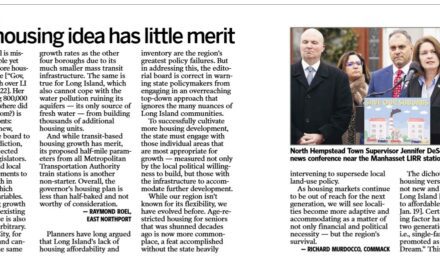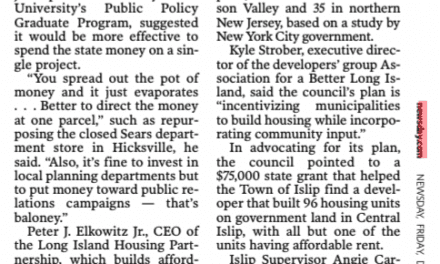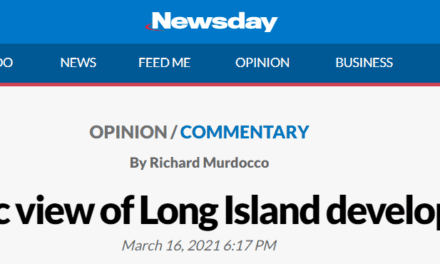Editor’s Note: Over the years with The Foggiest Idea, I’ve prided myself on speaking with journalism students who have reached out to me asking about the impacts of real estate development in communities across the country. It’s important to support the next generation of journalists, especially when it comes to local reporting.
Kudos to Stony Brook University’s Stony Brook School of Journalism student Josh Farber, who wrote his final project on the impacts that Heartland Town Square will have on the Nassau/Suffolk region. I was happy to speak with Josh and share my thoughts. You can read his work here. – RJM
Copied below is an excerpt, published on December 4, 2017.
“You have 450 acres of prime developable land that should be revitalized and revamped,” Richard Murdocco, an expert on land use and development on Long Island, said. “The issue is the scale of what is being proposed. It’s truly a mini city.”
The Islip Town Board unanimously voted to approve Phase I of the project in July, which paves the way for developers to begin construction on over 4,000 apartments, 1.38 million square feet of office space and 838,000 square feet of retail space.
“What was the other choice?” Flotteron asked. “Do we let them build on 400 acres, say a thousand homes and have more sprawl? No jobs? Statistically, there would be more kids coming from that and a lot, lot, lot less tax revenue coming to the schools.”
However, the issue of schools isn’t the only roadblock preventing Heartland from moving forward. Even though the project lies completely within the Town of Islip, the Town of Huntington raised objections in August about traffic that they believe would spill over the town line.
“Just as we did two years ago, and five years before that, we continue to ask: Are the public improvements that will be necessary to support this project going to be planned and implemented?” Frank Petrone, Huntington Town Supervisor, asked in a public letter dated August 31 to the Suffolk County Planning Commission. “When will the highway upgrades be designed and built? Will they be built at all? Who will pay for these major upgrades?”
A public meeting to address the concerns of the Town of Huntington, scheduled for Sept. 19, was cancelled because only Petrone signed the letter, instead of the entire Huntington Town Board, according to a Newsday report.
“Huntington’s major issue for many years hasn’t been that we oppose development or that we oppose this type of development, but that as this development is considered, that it is very important when you’re dealing with the scale to look on the effect on the neighboring communities and what needs to be done in terms of mitigation,” A.J. Carter, Public Information Officer for the Town of Huntington, said.
To help mitigate the effects of the Heartland development, Wolkoff says he will commit $25 million to the Town of Islip in stages “to do whatever they see fit” related to the Heartland project, including implementing traffic improvements. However, with the development aimed to be as walkable as possible and with changes in technology like driverless cars on the horizon, Wolkoff doesn’t think many improvements to area roads are necessary.
“Once you’re living here, there is no necessity for a car,” Wolkoff said. “Anywhere else you have to get into your car to go somewhere. You come into Heartland Town Square, you don’t need your car. You walk to restaurants, walk to movies, walk to a clubhouse. You walk and you see people.”
Wolkoff will still build the mandated 1.5 parking spaces per apartment, but expects the vast majority to remain vacant, with residents walking or renting Zipcars to get where they need to go.
At a minimum, the lawsuit from the Brentwood School District will delay the development, which has yet to break ground.
“I think the project will move forward,” Murdocco said. “If you ask the Town of Islip, they’ll say we studied it for 20 years, there’s no need to any more.”














